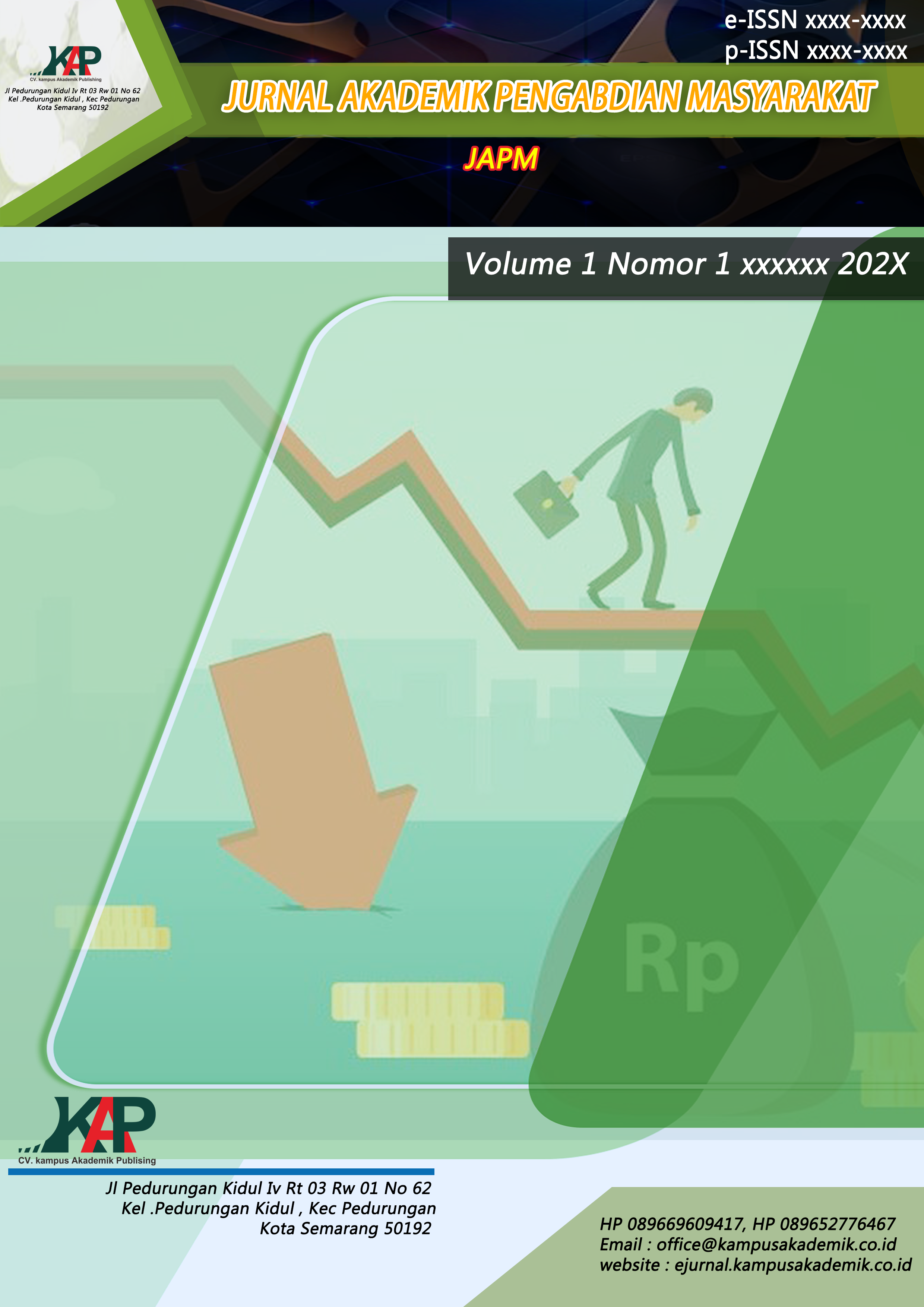Gerakan Hidup Bersih dan Sehat: Intervensi Sanitasi dan Edukasi Kesehatan di Desa Lero Kabupaten Donggala
DOI:
https://doi.org/10.61722/japm.v3i3.4628Keywords:
Clean and Healthy Living Movement, sanitation, health education, hygienic behavior, Lero Village, public health, health intervention.Abstract
The Clean and Healthy Living Movement (CHLM) is an important initiative in improving public health, especially in rural areas such as Lero Village, Donggala Regency. This journal discusses sanitation interventions and health education implemented in the village. Using both qualitative and quantitative approaches, this study collected data on community awareness regarding sanitation and hygienic behavior. The results indicate that the intervention successfully improved knowledge and sanitation practices among the community, leading to a reduction in diseases related to poor sanitation.
References
Badan Nasional Penanggulangan Bencana. (2020). Laporan pemulihan pascabencana Sulawesi Tengah.
Badan Pusat Statistik. (2020). Statistik kesejahteraan rakyat Kabupaten Donggala 2020. BPS Kabupaten Donggala.
Centers for Disease Control and Prevention. (2020). Global WASH fast facts. https://www.cdc.gov/healthywater/global/wash_statistics.html
Centers for Disease Control and Prevention. (2020). Hygiene fast facts.
Chambers, R. (1997). Whose reality counts? Putting the first last. London: Intermediate Technology Publications.
Creswell, J. W., & Plano Clark, V. L. (2018). Designing and conducting mixed methods research (3rd ed.). Thousand Oaks, CA: Sage Publications.
Kementerian Kesehatan Republik Indonesia. (2019). Petunjuk teknis Gerakan Hidup Bersih dan Sehat (GHBS). Jakarta: Kemenkes.
Kementerian Kesehatan Republik Indonesia. (2020). Laporan nasional Sanitasi Total Berbasis Masyarakat (STBM). Jakarta: Kemenkes.
Kementerian Kesehatan Republik Indonesia. (2020). Profil program STBM. Jakarta: Direktorat Kesehatan Lingkungan.
Kementerian Kesehatan Republik Indonesia. (2021). Profil kesehatan Indonesia tahun 2020.
Mardiana, R. (2021). Perubahan perilaku masyarakat setelah edukasi sanitasi di Kabupaten Sigi. Jurnal Pengabdian Kesehatan Masyarakat, 5(2), 110–119.
Rahman, A., Yusuf, M., & Latif, R. (2019). Pengaruh edukasi kesehatan terhadap pengetahuan sanitasi masyarakat di desa. Jurnal Promkes, 7(1), 55–62.
Rosenstock, I. M. (1974). The Health Belief Model and preventive health behavior. Health Education Monographs, 2(4), 354–386.
Sari, N. (2020). Faktor-faktor yang mempengaruhi keberhasilan program sanitasi di wilayah pedesaan. Jurnal Kesehatan Masyarakat Andalas, 15(3), 218–226.
Susanti, A. (2022). Pengaruh dukungan komunitas terhadap efektivitas program sanitasi di pedesaan. Jurnal Kesehatan Lingkungan, 19(2), 120–130.
UNICEF Indonesia. (2021). Sanitation and hygiene in Indonesia.
World Health Organization. (2021). Water, sanitation and hygiene (WASH). https://www.who.int/teams/environment-climate-change-and-health/water-sanitation-and-health
World Health Organization. (2022). Water, sanitation, hygiene and health: A primer for health professionals.
Downloads
Published
Issue
Section
License
Copyright (c) 2025 JURNAL AKADEMIK PENGABDIAN MASYARAKAT

This work is licensed under a Creative Commons Attribution-ShareAlike 4.0 International License.












